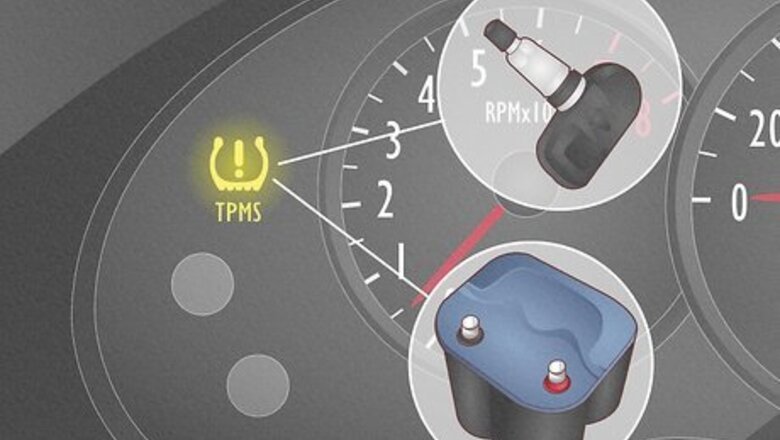
views
- A blinking TPMS light indicates that the sensors responsible for monitoring your tire pressure are malfunctioning.
- If the TPMS light is solid, it means one or more of your tires has low tire pressure and needs to be inflated.
- Reset the TPMS light by driving for at least 10 minutes, disconnecting your battery, or pressing the TPMS reset button.
Flashing vs. Solid TPMS Light
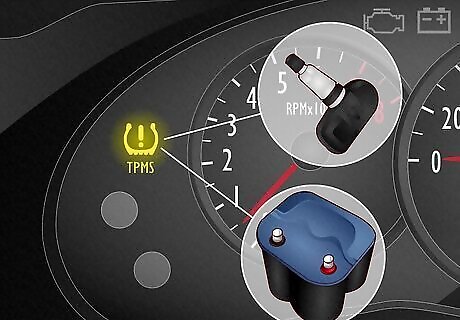
A blinking TPMS light indicates tire pressure sensor or battery issues. How would your vehicle’s computer know a tire is running low on air in the first place? The answer is sensors. Your car has a sensor attached to each wheel to monitor the air pressure, and if one of those sensors go bad, the TPMS light will blink. On some vehicles, a blinking TPMS light may also indicate that you need a new car battery. You can test your car battery with a multimeter or voltmeter. If the voltage is 12.4-12.7, the battery is fine. If it’s too low or dead, replace the battery. If the battery is fine, visit a mechanic to have your tire pressure sensors inspected and replaced as needed. On some vehicles, instead of continuing to blink, the TPMS light will blink for 60-120 seconds and then illuminate solid. The TPMS on your dashboard is short for “tire pressure monitoring system.”
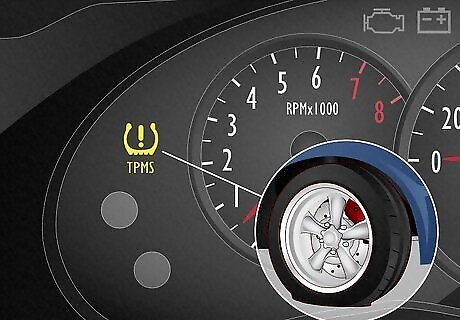
A solid TPMS light indicates a tire has low pressure. It could be that you’ve ran over a nail and one of your tires is losing air. Alternatively, a change in air temperature has caused one of your tires to slightly drop below the ideal pressure threshold. In either case, pull over in a gas station and check each tire’s pressure. If any of your tires are low, use the air compressor to refill them. If the TPMS light comes back on within the next few weeks, repeat this process and go to a mechanic to have your tire patched—you almost positively have a leak somewhere. You can find the tire pressure requirements on the sticker inside of your driver’s side door or in your manual. Most tires should be pressurized to 30-35 psi. If all of your tires appear full, check the spare. A lot of modern vehicles monitor the pressure of the tire in the trunk!
How to Reset the TPMS Light

Try driving the vehicle for at least 10 minutes. If you can, hop on the expressway and drive at least 50 miles per hour (80 km/h), since some older vehicles only reset when you get up to a higher speed. In any case, drive around for a while. If you successfully addressed the problem with your tire, sensor, or battery, the TPMS light should turn off. This is a drive cycle. A lot of dashboard lights require a drive cycle to get a full round of data and confirm that the problem has been addressed.
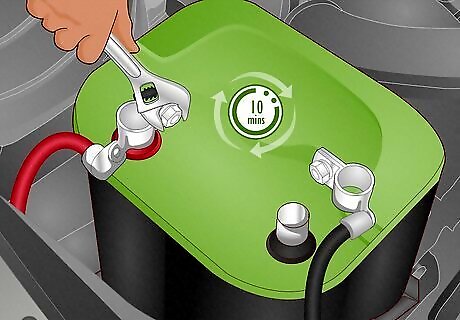
Or, disconnect the battery and hook it back up to force a reset. With the vehicle off, pop the hood and remove the negative terminal on your car’s battery. Then, remove the positive terminal to disconnect the battery. Wait about 10 minutes and then reconnect the positive terminal and negative terminal. Turn the vehicle on and wait for the dash lights to go away. Disconnecting the battery forces your vehicle's electronic control module (ECM) to reboot and go through all of its checks. This is sort of like restarting a computer, and if the issue is resolved, the TPMS light won’t come on.
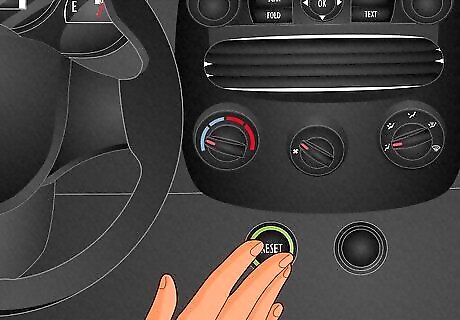
Or, turn the vehicle on and press the reset button if you have one. Look in your glove box or on your dashboard for a TPMS reset button. If you have one, shut your vehicle off and wait 1 minute. Then, turn the key to the “on” position and press the reset button. Turn the vehicle off, remove the key, and reinsert it. Crank the engine and run the vehicle. Wait 30 seconds or so and the TPMS light should go away. If you drive a Volkswagen or BMW, you probably have to press the TPMS reset button down until you hear an audio cue.
Why won’t my TPMS light go away after resetting?
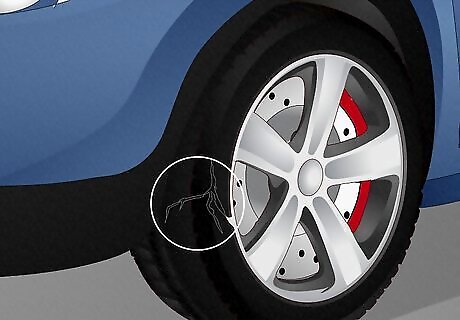
It’s possible your tires are physically damaged. Even if your sensors work perfectly fine and your tires are adequately inflated, damaged tires can trigger the TPMS light to come on. This is especially likely to be the case if you feel like your vehicle is handling strangely or your steering wheel pulls to one side. The sensors that check your tire pressure aren’t technically watching your tire pressure. They measure the weight distribution of your vehicle and look for imbalances. Damaged tires can create the kind of imbalance that triggers the TPMS light.
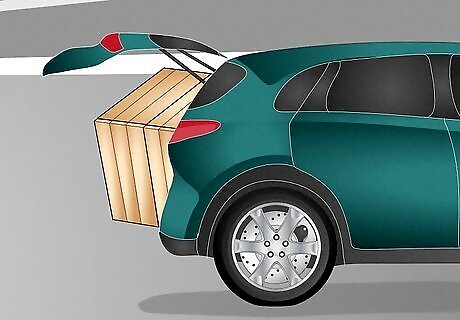
You’re carrying excess weight or you have snow chains on. The tire pressure sensors can also be tricked into thinking there’s a tire issue if you’re towing a trailer, carrying tons of weight in your trunk, or have snow chains on for inclement weather. All of these things can throw off a tire’s weight allotment and trick your sensors into thinking you’ve got low tire pressure.
Is it okay to drive with a TPMS light on?
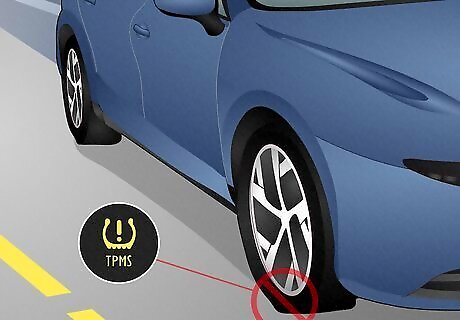
For a very short period yes, but you can’t ignore the light. So long as you don’t have a flat tire or a visibly low tire, you’re probably okay to finish the current trip or drive immediately to the mechanic. However, you cannot drive indefinitely. It’s dangerous to drive with low tire pressure as it can interfere with your ability to handle or brake. It also adds unnecessary wear and tear to your tires, so don’t put this off. If the TPMS sensors are faulty, it’s still not ideal to ignore the issue. Your tire pressure is extremely important, and a lack of sensors increases the risk of a future tire issue.
















Comments
0 comment